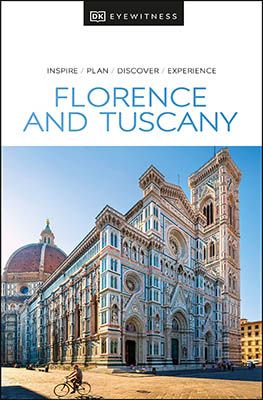Visiting Florence and skipping the Uffizi Gallery is almost a sin. This is because the Uffizi Gallery is the cultural gem of Florence, a city already brimming with so many beautiful sights. Why does this museum deserve a spot on everyone’s bucket list? Known as the Galleria degli Uffizi in Italian, it houses the most important collection of Renaissance art in the world, making it one of the most popular museums globally. On busy days, it welcomes up to 12,000 art enthusiasts, with over two million people visiting the Uffizi Gallery annually.
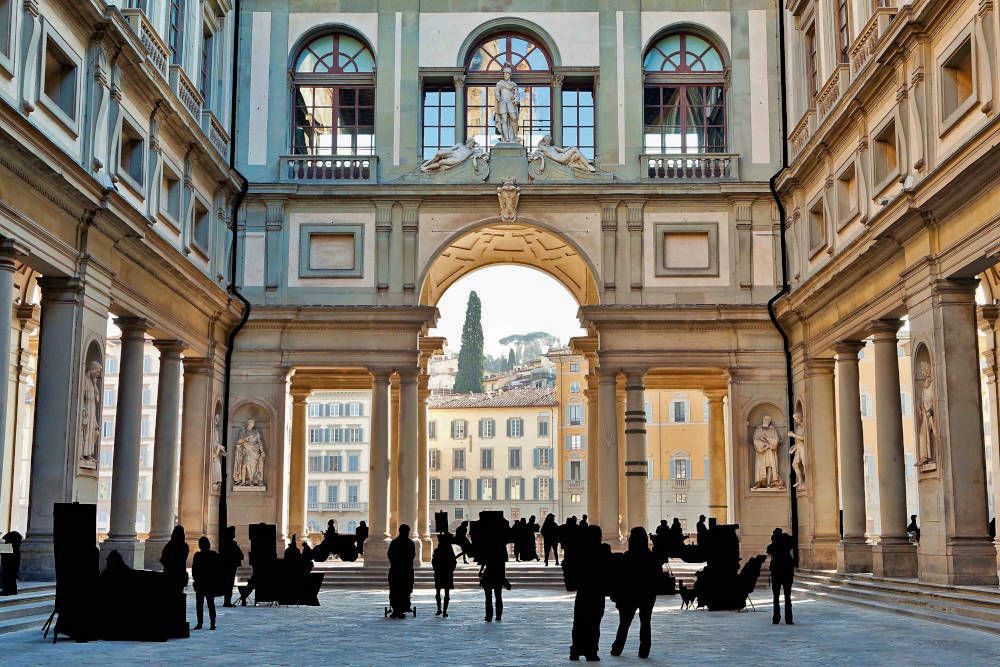
History of the Uffizi Gallery
The De’ Medici family was a powerful and influential family in Florence, known for their pioneering role in international banking and their significant influence on art and architecture in Florence and its surroundings. In 1560, Cosimo I de’ Medici commissioned the construction of new office buildings for the city’s magistrates. Architect Giorgio Vasari designed these “Uffizi.”
In the late 16th century, the first artworks found their place in the building. The De’ Medici family exhibited their art collection in the corridors of the building, and they also commissioned the architect Buontalenti to design a large space, the “Tribuna,” to house the grand works. Over the years, more and more artworks, including paintings, sculptures, books, and jewelry, found their place in the building.
In 1743, the last heir of the De’ Medici family bequeathed the building and the collection to the city of Florence, with the condition that the city must preserve the works and that the art should never leave Florence. In 1765, the building was transformed into a museum and is now one of the most visited museums in the world.
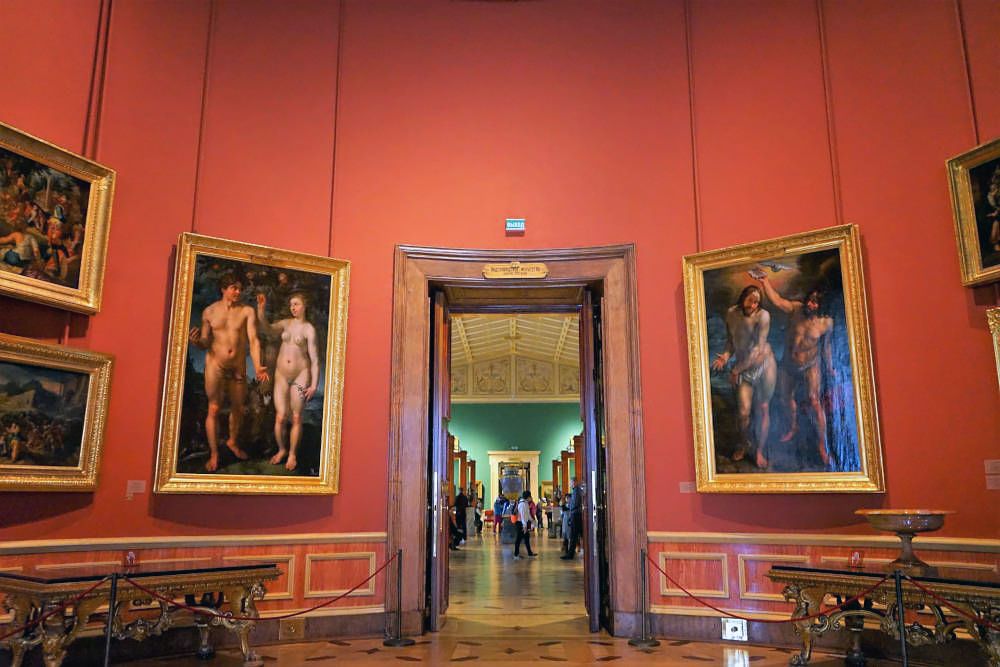
Visiting the Uffizi Gallery
The museum’s collection of art objects is vast, with many paintings and sculptures not on display but stored in the museum’s depots. The exhibition space was expanded several years ago, but the depots are still richly filled with art.
The Uffizi Gallery is housed in a U-shaped building, with the main museum halls located on the top floor, which serves as the starting point for your visit. From there, you follow the collection in chronological order. In total, the museum has 45 halls.
The museum’s floor plan is a useful guide during your visit, indicating two walking routes. The blue route is the “short path,” which showcases the collection’s masterpieces. The pink route is the “classic path,” allowing you to see all the art in the museum. The floor plan highlights with a heart symbol the artworks you absolutely must not miss.
The collection mainly comprises works by Italian masters from the Middle Ages, the Renaissance, and the Baroque periods. Renowned artists from these periods include Giotto, Masaccio, Botticelli, Bellini, Leonardo da Vinci, Michelangelo, Raphael, Titian, and Caravaggio. Additionally, the museum houses works by foreign artists, including some from the Low Countries, such as Rubens and Rembrandt.
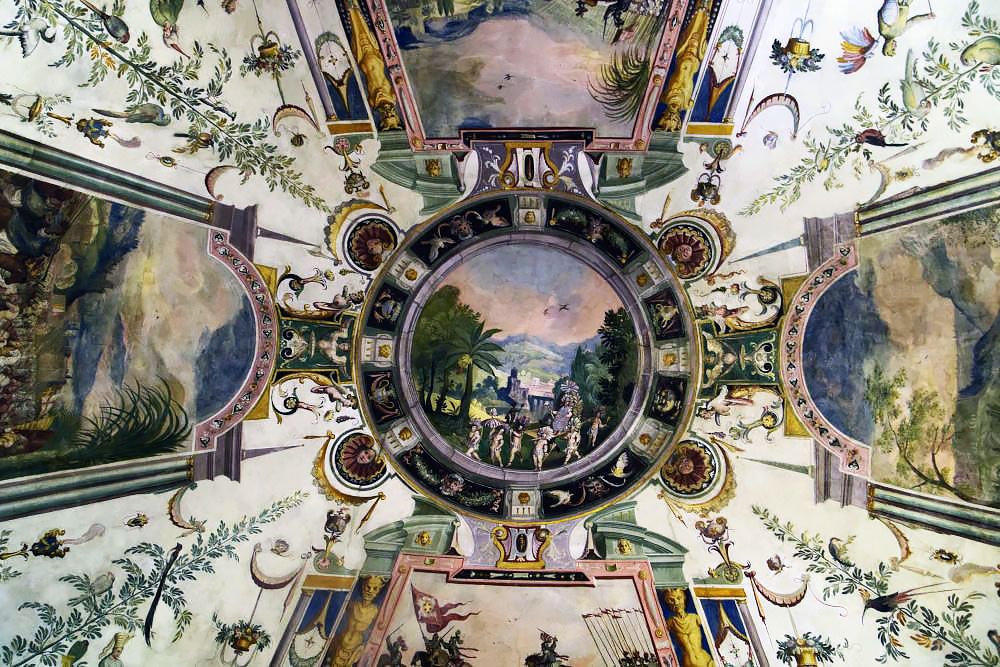
More than just painting
The museum showcases many beautiful paintings, alongside an extensive collection of sculptures. Particularly in the central hall of the museum, you’ll find exquisite Greek and Roman sculptures, including the Gaddi Torso and the Wrestlers. Additionally, the museum houses an extensive collection of sculptures from the Renaissance and Baroque periods. A standout piece from that era is Bernini’s Martyrdom of Saint Lawrence.
Finally, the museum boasts a unique collection of Flemish tapestries from the late 16th century, known as the Valois Tapestries. These tapestries depict the lavish feasts of Catherine de’ Medici at the French court.
When visiting, take the time to admire the magnificent building. Be sure to look up regularly as well. The ceilings are beautifully adorned with colorful frescoes, and the views outside are stunning. From the windows on the top floor, you can gaze upon the Ponte Vecchio above the River Arno.
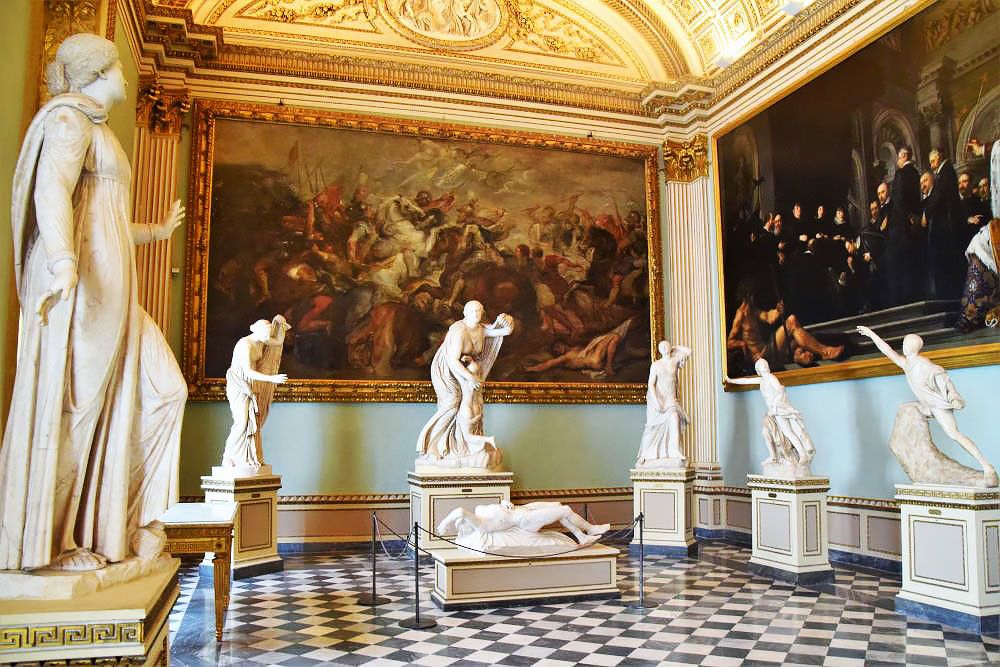
Highlights at the Uffizi Gallery
It’s impossible to describe all the highlights of the Uffizi Gallery. Nevertheless, we’ll mention a few, but do discover with your own eyes the magnificent artworks that have found a place in the museum.
Giotto and Cimabue
In the 13th century, Giotto was a pupil of Cimabue. Both, but especially Giotto, revolutionized the art of painting. Giotto was the first to express space and perspective in artworks, leading to a revolution in painting. He was also chiefly responsible for the transition from a Byzantine style to a more vibrant Gothic style. Works by Giotto and Cimabue are displayed in one of the first halls of the museum, with the masterpiece being Ognissanti Madonna.
Art by Botticelli
Sandro Botticelli was an artist from Florence who received numerous commissions from the De’ Medici family during the Middle Ages. His renown also led him to contribute to the decoration of the Sistine Chapel in St. Peter’s Basilica. However, his most important works are housed in the Uffizi Gallery, including Primavera, The Birth of Venus, and The Adoration of the Magi.
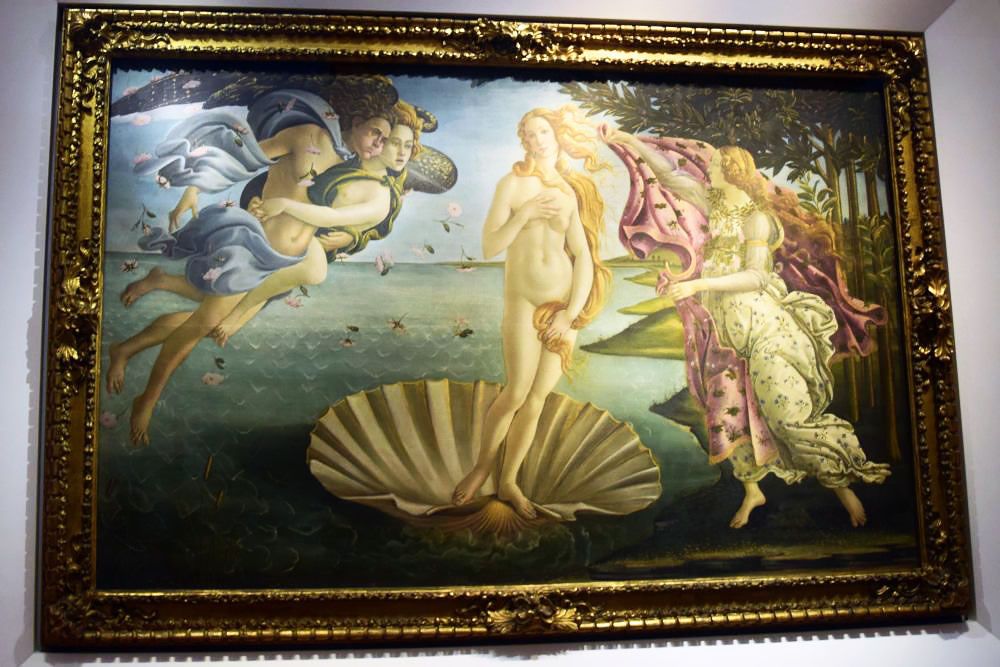
Unique artwork by Michelangelo
Michelangelo is world-famous for his sculpture David, one of the most renowned sculptures globally. While David is not located in the Uffizi, you can admire it during your visit to Florence. The Uffizi houses the only painting Michelangelo created in his lifetime, The Holy Family, also known as the Doni Tondo, which he created for the wedding of Agnolo Doni and Maddalena Strozzi.
Duke and Duchess of Urbino
Piero della Francesca created this famous double portrait of the Duke of Urbino and his wife, both depicted in profile. This was a requirement of the duke, who had lost his right eye in battle and hence wished to be portrayed only from his left side.
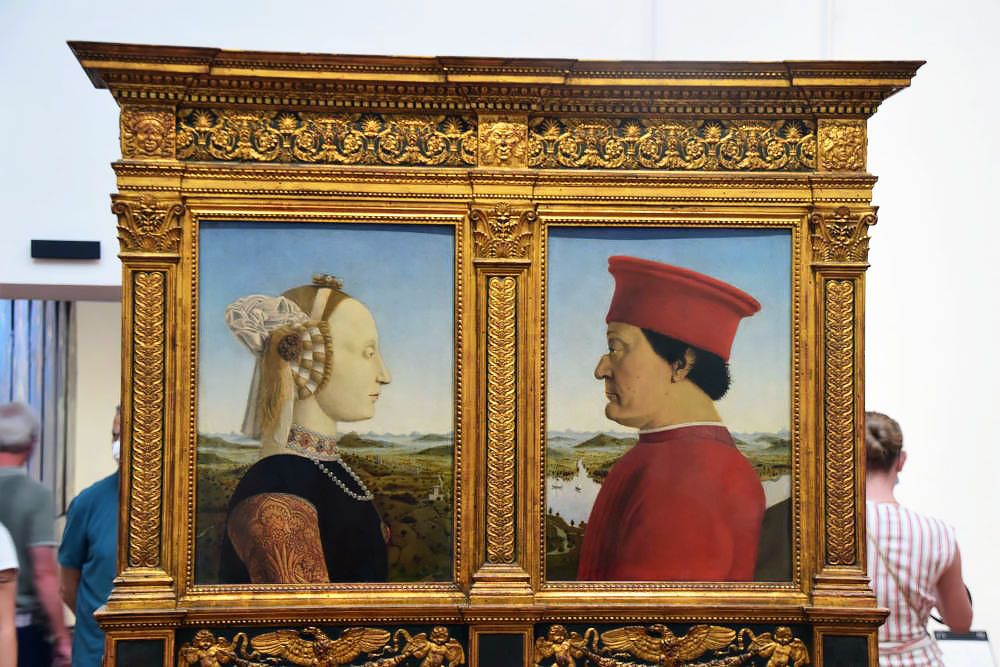
Two versions of the Annunciation
The Annunciation, the announcement to Mary of the birth of Jesus by the archangel Gabriel, is featured in two masterpieces in the museum. Simone Martini painted his masterpiece in 1333, strongly influenced by the new techniques employed by Giotto. Around 140 years later, the young Leonardo da Vinci also created a version of the Annunciation, situating the scene in one of Florence’s gardens.
The Tribuna
The octagonal Tribuna room is richly adorned in red and gold. The room’s main attraction is the principal art treasures owned by the De’ Medici family. Important classical sculptures are housed in the room, and the walls feature some portraits of the De’ Medicis and their children. High on the wall hangs the artwork The Musician Angel, which has been depicted on numerous posters.
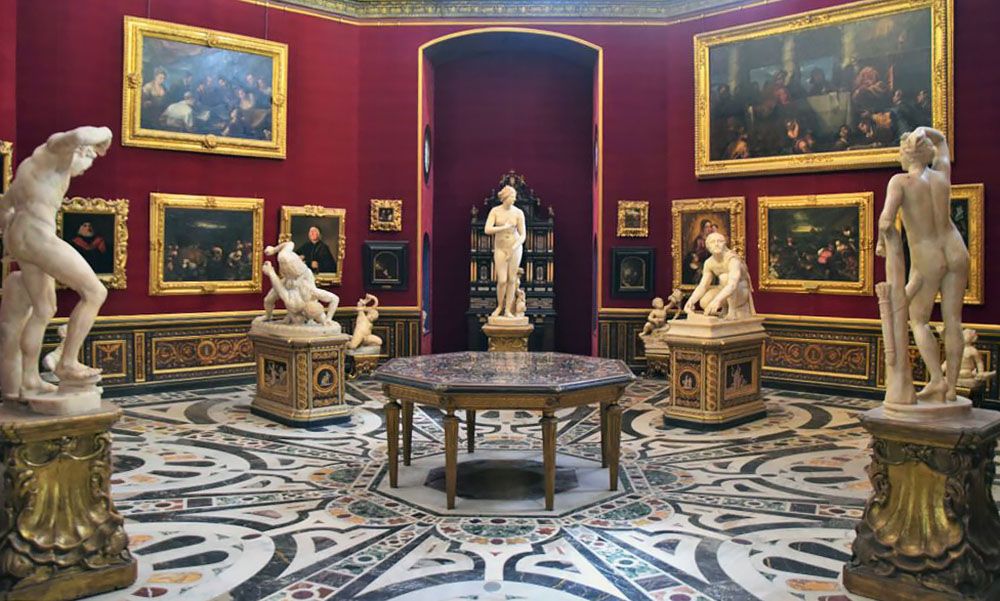
Other highlights at the Uffizi Gallery
This is just a small selection of the magnificent artworks in the museum. There are many more. Notably, there are numerous important works by the artist Raphael on display. Additionally, the Venus of Urbino, a sensual nude by the artist Titian, is not to be missed. Of course, your personal taste will also play a significant role in which artworks appeal to you. Nonetheless, a visit to the Uffizi Gallery will be a highlight of the city of Florence for everyone.
FAQs about the Uffizi Gallery
The Uffizi Gallery is located on the banks of the Arno River, right in the city centre. You can easily reach the museum on foot from other attractions. The address is Piazzale degli Uffizi 6. If you're using public transport, take bus C1 to the Galleria Degli Uffizi stop. Alternatively, you can take lines C3 and C4 to the Ponte Vecchio stop. From the bridge, it's a short walk to the museum. It's advisable not to drive to the museum. However, if you do arrive by car, park on the outskirts of the city and use public transport to reach the museum.
The Uffizi Gallery is one of the most popular museums, showcasing the world's most important Renaissance art collection. The museum boasts numerous famous masterpieces by artists from that era.
The Uffizi Gallery houses an extensive collection of Renaissance art, featuring numerous masterpieces. Some of the highlights from the collection that you shouldn't miss include:
- Madonna Rucellai
- Adoration of the Magi
- Duke and Duchess of Urbino
- Birth of Venus
- The Holy Family
- Venus of Urbino
- Primavera
- Annunciation
- Madonna of the Long Neck
If you want to thoroughly admire all the artworks, you could easily spend an entire day in the museum. It's advisable to allocate at least half a day for your visit, allowing you to explore the immensely large museum without rushing.
The museum has two designated walking routes: a short route covering the main works on the second floor, requiring a minimum of 1.5 to 2 hours. The classic route takes you through Italian and European art from the 13th to the 17th century, requiring at least 2.5 hours.
The Uffizi Gallery is incredibly popular due to its magnificent art collection, resulting in crowds throughout the year. The museum is open every day except Monday, with admission starting at 8:15 am, which is an ideal time to enjoy the masterpieces without the large crowds. The crowds may also thin out around lunchtime and towards the end of the day. It's best to avoid planning your visit during the busy summer months of July and August.
You can purchase a ticket for the Uffizi Gallery online, which is highly recommended to avoid the long queues at the ticket office. We have listed various options for purchasing tickets at the bottom of this blog.
By purchasing an online ticket in advance, you can bypass the long queues at the Uffizi Gallery. You won't have to wait in line and can proceed directly to the entrance control. We have listed various options for purchasing tickets at the bottom of this blog.
Special tours
Book special tours with our partner GetYourGuide here. We earn a modest commission for your booking at no additional cost to you. The commission helps us maintain this travel blog.


